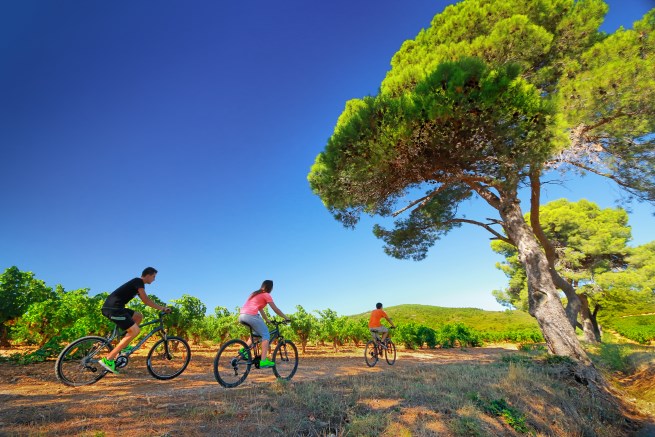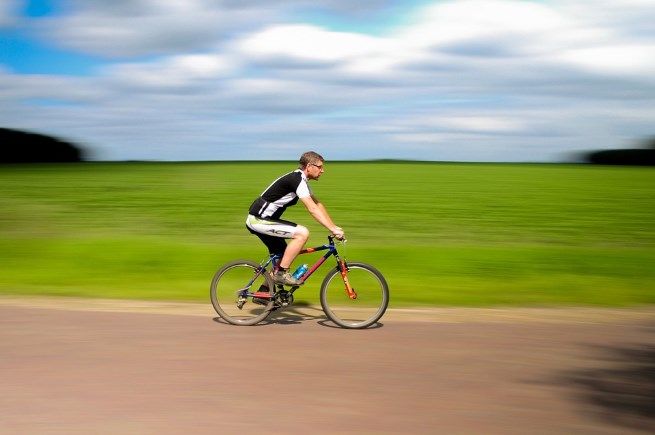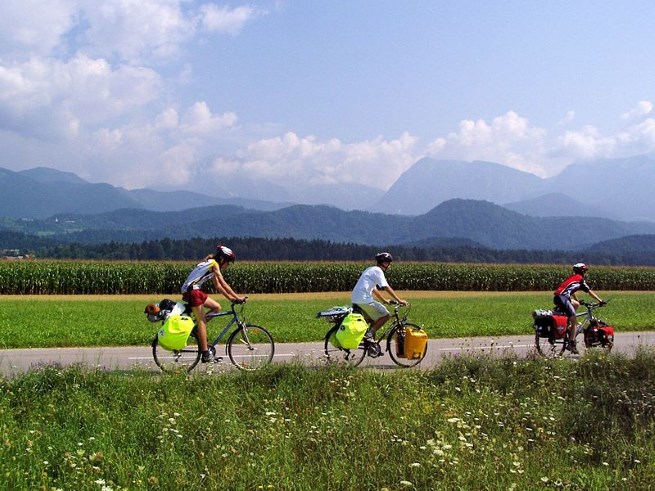A Simple Guide to Hiring the Perfect Bike in France

Cycling in France is wonderful, some say the best in the world, but it can be a hassle to bring your own bike which is why so many people leave their beloved steeds at home and rent one when they get there.
If you’re a very experienced rider it’s straightforward to find the right bike, but if you’re less technically minded there are a few pitfalls to avoid. If you’re on the wrong bike you’ll be less comfortable and cycling will be harder work, but follow this simple guide and you’ll love your French cycling holiday.
First of all you need to make sure that the bike you hire is suitable for the riding you’ll be doing. It sounds obvious, but if you’ll be riding on the road or on well surfaced bike paths, a road bike is best. Suspension and big tyres might look as though they’ll give you a comfortable ride, but if you don’t need them, all they do is make riding harder work than it needs to be. But that doesn’t mean you should hire a full-on racing bike, especially if you’re not used to riding one. These days it’s easy to find bikes which are nearly as light and zippy as a racing bike, but which have the comfortable upright handlebars most new cyclists prefer. If you’ll be on rougher surfaces like you’ll find on some canal towpaths and bike routes, bigger, heavier tyres make sense. They’ll be more resistant to punctures and will cope better with the bumps, but suspension is just extra weight you don’t need. Don’t be tempted by a mountain bike unless you’ll be covering much rougher terrain.

A Flat-barred Road Bike in France © Pixabay and Creative Commons
I’m a huge fan of electric bikes. These days they work really well, and they mean the average person can ride in hilly terrain. Don’t forget that the best scenery and views are in the hills, so if you don’t think you’re fit enough, an electric bike could be a better option than a flat route with dull scenery. You just need to make sure the bike has enough range for the route you’ll be doing.
It’s worth thinking about luggage. If you’ve booked a fixed base holiday or have luggage transfers arranged, all you’ll need is plenty of water and a few basic tools, which will be easy on any bike. If you’ll be carrying your own gear, it’s much better to carry it on the bike than in a rucksack. A bag on your back will be uncomfortable and sweaty, and make it harder to balance. The best solution is small panniers on a rear carrier, but unfortunately carriers and panniers are quite rare on hire bikes. Panniers can be brought with you from home, but check before you bring your own carrier that it’ll fit the hire bike. If you think you also need front panniers, you’re bringing too much stuff!
Now you’ve figured out what sort of bike you need, you’ll need to make sure it fits. A professional bike hire company will help you out with this, but it’s always good to know the basics. Saddle height is the most obvious thing to get right, but most newbies don’t. It ISN’T necessary to be able to reach the ground with your feet when you’re sitting on the saddle, especially not both feet at the same time. If you do that, pedalling will be much harder, you’re more likely to get aches and pains, and your feet are more likely to slip off the pedals. A good rule of thumb is to put your heel on the pedal when it’s nearest to the ground. Adjust the saddle height so that your leg is straight; that way when you’re pedalling with the ball of your foot, your knee will be slightly bent. You should also be able to straddle the bike with your feet flat on the floor.

Summer Bicycle Tour © Marek Ślusarczyk and Creative Commons
Handlebar adjustment is more a matter of personal preference, but a good place to start is having them level with the saddle. Too high and you’ll have too much bodyweight on the saddle, too low and you’ll find it difficult to keep your eyes on the road.
If you’re going to be comfortable, a good saddle is important, especially for women. Professional cyclists ride very narrow saddles with little or no padding. They do it because wide saddles with lots of padding cause chaffing, and because their shorts are well padded. OK, so you’re not going to be riding the Tour de France but the pros really know about comfort for long days in the saddle and you can learn from them. Most good quality saddles have a “love groove” which keeps pressure away from sensitive areas, using your sit bones instead. They’re shaped differently for men and women so it’s worth making sure you have the right one.
You can hire a cheap mountain bike almost anywhere in France, but quality bike hire is harder to find outside the major cycling destinations. The best resource for tracking down the right bike is Freewheeling in France. Many of the best hire companies will deliver, so don’t worry if there’s nothing in exactly the right place.
This guide isn’t exhaustive, but it will help you get the most out of a cycling holiday by making sure the riding is as easy and comfortable as it can be. Bon Voyage!
For more information about cycling in France, visit the France Today cycling zone.
Share to: Facebook Twitter LinkedIn Email
By Peter Quaife
Leave a reply
Your email address will not be published. Required fields are marked *




REPLY
REPLY